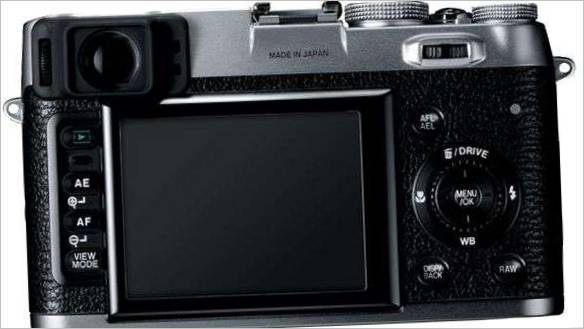The developers are tired of the aimless race of technology and numbers themselves. And users are not really interested in it: average citizens are already confused in the same type models and their superfunctions, professionals, it seems, and did not believe in the 30x zoom and electronic intelligence … In fashion gradually returns retro-style, and this should be understood not so much old design as a whole forgotten paradigm of creating high-quality and reliable technique for those who understand and understand.

12.3MP 23mm – 2.8″ $1400
This is one of the reasons for the revival of “professional” compacts like Canon’s G-series or Nikon’s P-series and the emergence of new powerful models without any loud technical achievements, but with a strict focus on ergonomics and efficiency.
Fujifilm breaks all records in this respect as the new FinePix X100 is not only one of the most “retro” amongst all those playing with traditional style, but also has a Spartan fx and an APS-C “SLR” sensor as well.
The FinePix X100’s imaging system is truly astonishing. Its key part – the sensor size of 23,6 × 15,8 mm, that is as big and, therefore, sensitive and high-quality as in most SLR cameras and a half of “mirror-less”. The available sensitivity values for shooting range from 200 to 6400 ISO with extended steps of 100 and 12 800 units.
At the same time the device does not have a bayonet mount, so its lens is non-replaceable, rigidly coupled to the body and matrix. And the lens itself is “hard” in a way: it’s a fix with a focal length equivalent to 35 mm at aperture of F2. Such “semi wide” optics on the one hand provides maximum quality and is exceptionally convenient for many typical subjects, on the other hand it is not particularly versatile and in many cases will require the photographer to walk around with his legs instead of the usual use of the zoom.
It is not hard to guess that not every photographer is suitable for this camera. Only an experienced photographer who understands that photography is not about lazy clicking the shutter – it’s about hard work and sometimes hard work.
The conservative ergonomics of the camera, which is inextricably linked to the stylistic solution of the body, fully confirms this requirement.
The X100 has no scene programs or clever automation, just a combination of two mechanical shutter speed and aperture dials but there’s a simple program mode if you set both dials to “Auto” at the same time .
The appearance of the camera is incredible charismatic: metal body elements, upholstery with a leather substitute in the middle part according to legend, the synthetic material was preferred because of better durability , classic layout of controls except, of course, the display with a diagonal of 2.8 inches and a resolution of 460 thousandthousandths of latent in the center of the body , a wide range of functions and a lot of controls. points placed on the back , milled solid metal switches and dials. It’s not easy to resist the historic charm of the X100..
There is, however, an innovation that’s also very interesting: the unique Hybrid Viewfinder. In essence, it is a traditional Galilean viewfinder, only instead of a bright frame and backlight window, combined with a 1.44-million-dollar LCD matrix. points.
The result is a viewfinder that behaves just like an electronic viewfinder, displaying 100% of the frame with whatever data you can put on the screen. But much more interesting is the hybrid mode where the real image of a scene is supplemented with overlay of graphical data like shooting parameters or histograms from LCD matrix.
0.5x magnification optical viewfinder and, similarly to viewfinders of conventional compact cameras, it shows the area outside the field of view of the lens, framing approximately 90% of the frame this approach allows you to check your surroundings without taking your eyes off the camera and know exactly what part of the image is guaranteed to show up in the shot, correcting for parallax and focus . A special lever on the front panel lets you quickly switch between hybrid and fully electronic circuitry.
In general, the X100 looks and feels very good and the image quality with its large sensor and high quality optics will satisfy even the most demanding photographers. There is only one question on the essence: how attractive is a compact with a fixed lens against the background of a variety of “system” cameras?
Considering the fact that the X100 is no smaller or heavier than other “non-smoke” cameras 127×74×54 mm, 445 g , the answer is not obvious. And the price of the novelty is about 40 thousand. It also doesn’t make them want to rush to the store. The compelling argument, as usual, is the eye-catching design. If you’re a conservative, vintage lover and still remember spinning discs on your old film rangefinder – well, some considerations of optimality and price can be ignored for the sake of fun. The X100 is a pleasure to look at.

Can the Fujifilm FinePix X100 compact camera meet the high standards and demands of a professional photographer who values experience and a meticulous approach to their craft?